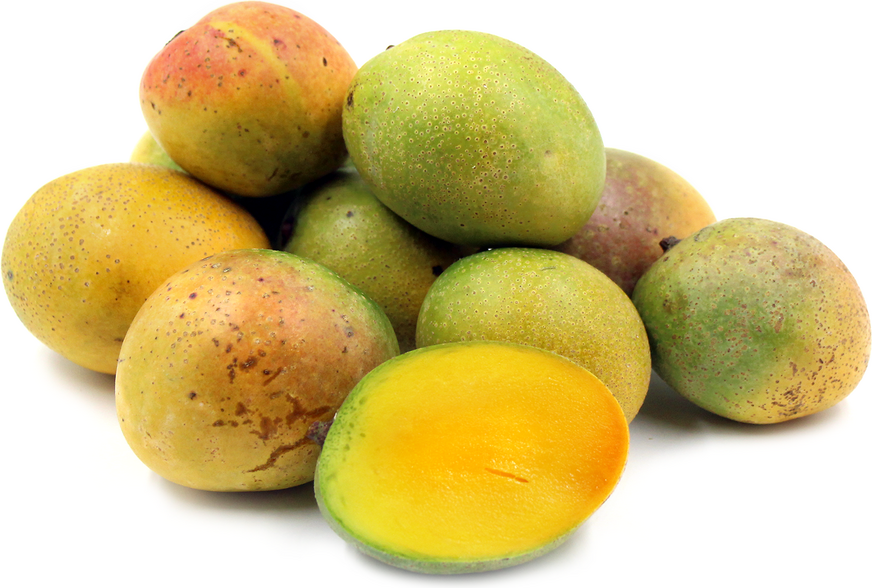


Villasenor Mangoes
Estimated Inventory, lb : 0
Description/Taste
The Villasenor mango is small oval fruit just barely bigger than a golf ball. Its thin, smooth and leathery skin is a mottled yellow green or gold color with occasional brown spots, which are not an indication of spoilage, but rather of ripeness and sweetness. The interior flesh is an orangey-peach color and has a smooth, less fibrous texture than its larger scale cousins. The inner pit is more of an underdeveloped seed husk which can be sliced right in half and is easily removed. The Villasenor mango has a smooth texture and a mild floral, tropical flavor.
Seasons/Availability
The Villasenor mango is available throughout the summer and fall.
Current Facts
The Villasenor mango is a dwarf variety of Mangifera indica, and a member of the Anacardiaceae family, the same as the cashew and pistachio. The small scale tree is perfect for backyard horticulture in the Southern California climate. The small fruits come into season late for most mangoes. Depending upon the micro-climate, the Villasenor can produce twice a year. The most unique quality of the Villasenor is its almost non-existent pit, making it ideal for easy preparation and quick snacking.
Nutritional Value
Mangoes are high in vitamins C, A and B6, and are a good source of fiber and folate. Mangoes also contain enzymes beneficial for digestion. The oils in the skin of the mango can cause irritation to people with a sensitivity to poison ivy or poison oak. However, the flesh of a ripe mango shouldn’t be irritating.
Applications
Villasenor mangoes are ideal for snacking because of the nearly non-existent seed. Once the inedible skin is removed, the fruit can be halved and the pit easily removed. Slice Villasenor mangoes and serve on green salads or dice and mix with diced red peppers, red onions and jalapeno for a tropical salsa. The smooth texture of the Villasenor mango is ideal for purees and sauces. Use Villasenor mangoes in smoothies or mix with ice cream. Ripen Villasenor mangoes at room temperature until the skin is golden-colored and the skin gives slightly. Ripe mangoes can be refrigerated for a few days. Prepared mangoes should be refrigerated and used within a day.
Ethnic/Cultural Info
Fossilized mango leaves were found in the hills of Meghalaya, nestled in the northeastern part of India, at the foot of the Himalayas, between Bangladesh and Bhutan. The fossils date back 65 million years. It was here that mangoes originated, likely being cultivated from a wild form of mango, Magnifera sylvatica. The seeds and fruit were disseminated both eastward and westward by explorers like the Persians and the Portuguese.
Geography/History
Villasenor mangoes were developed in the 1950s in Los Angeles. They grow best along the coasts and in the foothill areas of warm, sub-tropical regions. Mangoes originated in a small area in northern India, near the Himalayas. By the time the Portuguese came across the mango on their explorations, it had spread to the East Indies. Mango seeds are large, so historians believe the tropical fruit spread around the globe by sea via explorers and sailors. The Portuguese were instrumental in the spread of mangoes; they established the first mango trade after establishing a colony in western India in the late 15th century. Spanish explorers brought the seeds to Mexico in the 17th century. Around 35 varieties are currently being cultivated in tropical regions around the world, over 500 varieties of mango exist. The biggest growing areas outside of India include Haiti, Mexico, Brazil, the Philippines, and China. Villasenor mangoes are grown by small farms and home gardeners; the tree is known for having a strong rootstock and is recommended when grafting other mango varieties.
Podcasts




